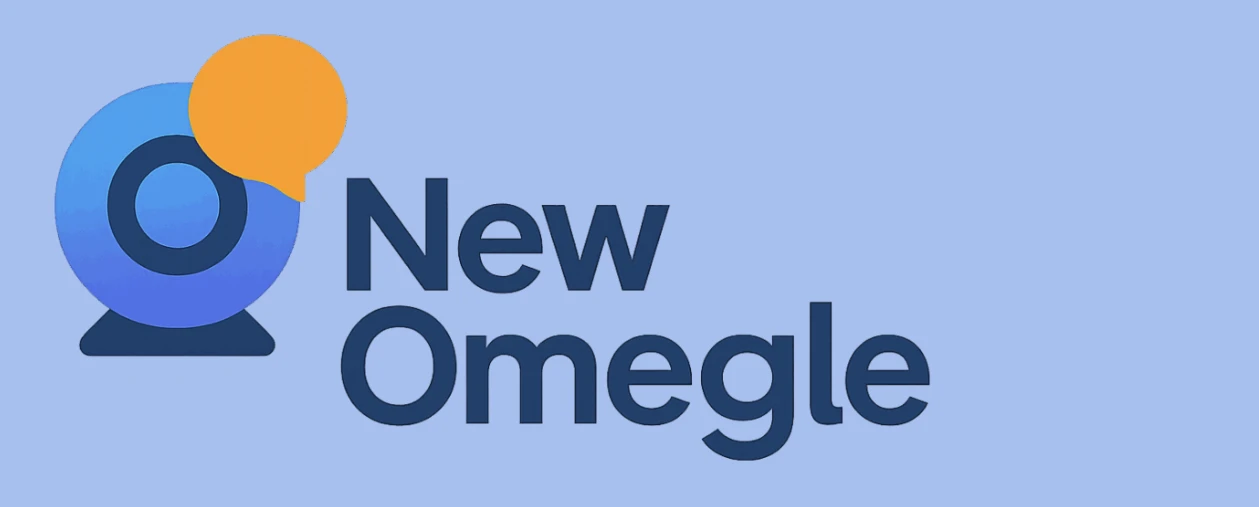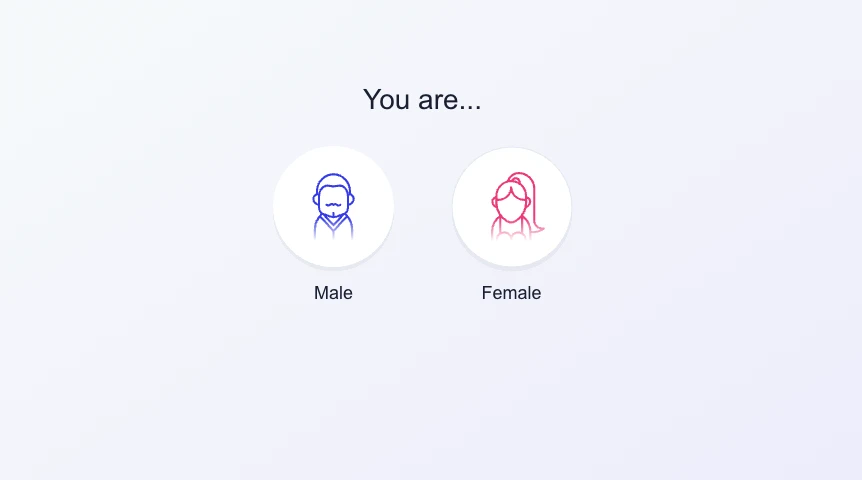New Omegle
When Omegle shut down, it left a weird silence online. People didn’t expect it to disappear. One day it was there. The next, gone. No big warning. No goodbye message. Just a quiet end to something millions used.
It was never about design or features. Omegle was fast. You clicked a button and boom, you were face to face with someone. No accounts. No filters. Just raw, unfiltered conversation with whoever showed up. Sometimes funny. Sometimes weird. But never boring.
After it closed, people started looking. They typed "New Omegle" into search bars. Not because they wanted something better. Just something that gave the same feeling. That sudden connection. That tiny moment of surprise when a stranger pops up on the screen.
Now there are sites trying to fill the gap. Some copy the old style. Others try to improve it. Either way, the name stuck. New Omegle is not one single site. It is the idea coming back in different shapes. And people are still curious. Still clicking. Still hoping to meet someone unexpected.

The Rise and Fall of Omegle
Omegle didn’t try to be fancy. That was the point. It came out in 2009 and just worked. No signup, no photos, no bios. You typed in the site, pressed a button, and talked to someone. That’s it. For a lot of people, especially teens and students, it felt like freedom.
Some used it for laughs. Others used it late at night when they couldn’t sleep. A few even made friends or found long conversations that stuck with them. The randomness made it exciting. You never knew who would appear next.
Over time, though, things got messy. Spam increased. Creepy stuff became more common. People started asking if it was safe. The charm was still there, but it got buried under too much noise.
In 2023, Omegle quietly shut down. No big statement. Just a note from the creator saying it was time to stop. After all those years, the site that started it all was gone. But the idea wasn’t. That feeling of clicking and connecting with someone completely random was still stuck in people’s heads.
Why New Omegle Became a Movement
After Omegle shut down, people didn’t just move on. They went looking. Not in a casual way either. They searched New Omegle like it was a mission. Reddit threads popped up. TikTok videos showed people testing different sites. It wasn’t about finding the best platform. It was about finding that same feeling again.
The phrase started showing up everywhere. New Omegle. Not as a brand, but as an idea. A shared way of saying, “Where can I find this again?” Even people who hadn’t used Omegle in years started getting curious.
Some creators built quick replacements. Some just made memes. A few tried to make safer versions with better filters. But the core idea stayed the same. A screen. A stranger. A few seconds of awkward silence. Then maybe something interesting.
What makes it a movement is how fast it spreads. No ads. No influencers. Just people who missed something simple and strange. New Omegle isn’t one site. It’s all the sites trying to bring back that little moment of surprise.

Core Innovations in New Omegle
The idea is the same, but how it works now feels different. People still want that quick face to face with someone new. But they also expect a little more control and a little more safety. That’s where the newer platforms step in.
Smarter Matching
The original Omegle just threw you into a chat with anyone. Sometimes that worked. Sometimes it was a waste of time. Now, some New Omegle sites use basic filters or interest tags. A few even test AI-powered pairing. You still get random chats, but there’s a better chance the person on the other side is at least mildly relevant.
Better Safety Features
The old Omegle had a reputation. It wasn’t always great. Reports, bans, and moderation were limited. Now, many sites using the “New Omegle” label have built-in tools that auto-detect weird behavior or let users block fast. Some even blur the video until both sides agree to continue. It’s not perfect, but it feels less chaotic.
Works on Phones Without Breaking
The mobile experience used to be rough. Omegle on the phone was clunky. Now, the new wave of platforms makes sure the video actually fits your screen. No extra pop-ups. No five taps to get to the chat. It just loads. That small fix makes a big difference, especially for users under 25 who are mostly on mobile anyway.
New Omegle in the Wider Ecosystem
There are a lot of sites trying to take Omegle’s place. Some are serious platforms with funding. Others feel like weekend projects that somehow took off. When people search for New Omegle, they end up in a mix of old clones, weird side projects, and a few surprisingly solid options.
The difference now is that users are pickier. They compare. They test things. One site loads faster. Another has better moderation. A third lets you choose the country of your chat partner. Little details matter more than they used to.
How It Differs from Classic Alternatives
Old alternatives like Chatroulette or Tinychat are still around. Some even saw a spike in traffic after Omegle disappeared. But many feel stuck in time. Their design, their flow, even their community… It all feels like 2013. That’s why newer platforms calling themselves New Omegle tend to attract younger users. They feel more up to date.
Where It Stands Against Niche Platforms
Then there are the polished ones. Sites like CooMeet, Chatspin, and EmeraldChat. These go heavy on features. Gender filters. Registration options. Some even have identity checks. But that’s not what every user wants. People searching for “New Omegle” often just want to click and connect. No long setup. No accounts. Just go. That’s where the simpler platforms still win.
Cultural Impact of New Omegle
When Omegle shut down, people didn’t just lose a website. They lost a little piece of internet culture. It was one of those places you didn’t really talk about, but almost everyone had tried at some point. You’d hear stories like “I met a guy from Brazil once” or “we talked for two hours and then never saw each other again.”
Now that gap is being filled by what people call New Omegle, and it’s showing up in all kinds of places. On TikTok, you’ll see creators filming their reactions to strangers. On Reddit, there are threads full of screenshots and weird encounters. Even streamers are jumping back in, using it for content just like they did years ago.
Younger users, especially those who never caught the original wave, are curious. They want to see what the hype was about. For them, New Omegle isn’t a comeback. It’s a discovery. And that’s giving the whole idea a second life.
At its core, it’s still the same thing. Two strangers. One screen. Maybe awkward, maybe funny, maybe a little chaotic. That unpredictability is what made Omegle iconic. New Omegle is just picking up where it left off.
User Experience and Best Practices
Using these platforms looks simple from the outside. You click, you connect, you talk. But once you’re actually in it, the little things make a big difference. A bad first few seconds and the other person skips. Awkward silence, weird lighting, strange angles… it all adds up fast.
The best chats usually start off calm. No intense questions. No weird stares. Just a casual “hey” and maybe a smile. That alone puts people at ease. Most users are there out of curiosity, not desperation. They don’t want to be overwhelmed.
Keep It Simple
You don’t need a script. You’re not giving a TED Talk. Ask something light. “Where are you from?” still works. Or comment on their background if it’s interesting. A shelf full of books. A pet walking by. Anything human is better than trying too hard to impress.
Don’t Force the Vibe
If someone’s not into the conversation, let it go. The skip button exists for a reason. Sometimes people connect, sometimes they don’t. That’s part of the fun. Chasing validation makes the whole thing feel off. Let it be weird. Let it be short. Or maybe it turns into something cool. You won’t know unless you just go with it.
Use a Decent Setup
You don’t need fancy lighting or a studio mic. But don’t sit in the dark. Tilt the camera so your forehead isn’t taking up the whole screen. Background noise matters more than people think. And maybe, just maybe, put on a clean shirt. You’re still a stranger, but a little effort goes a long way.
Who Actually Uses New Omegle?
People come to New Omegle-type platforms for different reasons. Some want quick laughs. Others just want someone to talk to. Here are the most common types of users you’ll run into:
- The night scroller
Just bored. Maybe can’t sleep. Opens the site out of habit. Doesn’t say much at first. Might skip a lot, might stay longer if the vibe’s right.
- Teenagers and students
Curious, playful, sometimes chaotic. They’re not here for deep talk. Mostly just having fun. Joking, laughing, jumping between strangers. Sometimes they come in groups, off-camera, commenting from the side.
- Content creators and streamers
Always camera-ready. Good lighting, good mic, clear agenda. They’re hunting for reactions. You’ll know it when you see them. Some are entertaining. Others are just fishing for clips.
- People looking for actual conversations
Rarer but still around. Chill, patient, usually older. They’re not in a rush. Sometimes the talk goes long. Books, music, travel, anything real. They’re here for the human part.
- Trolls and chaos agents
You’ll spot them fast. Weird masks. Soundboards. Random behavior. They either want to shock or confuse. Hit skip if you’re not into it. No hard feelings.
The Future of Random Video Chat Beyond New Omegle
Right now, it’s just phones and webcams. But that won’t last forever. The way we connect with strangers online is already shifting, and it’s not hard to imagine where it might go next.
AI is starting to play a bigger role. Some platforms already use it to match people based on conversation style or mood. You might not even realize it, but the person you got paired with? The system nudged that connection because it “felt right.” It’s subtle, but it’s happening.
There’s also talk about AI-generated avatars. Imagine jumping into a chat and not knowing if the person you're talking to is real or AI-driven. Not a scam. Not a fake. Just a fully generated personality, trained to hold a conversation. Sounds weird, but give it five years. It’ll feel normal.
Then there’s hardware. Smart glasses and mixed reality headsets are picking up steam. The idea of putting on a pair of glasses and instantly being in a face to face conversation with someone across the world doesn’t sound far off anymore. No phone. No laptop. Just a blink, and someone’s there.
And who knows? Maybe “random” won’t stay random forever. AI could learn what kind of strangers you enjoy talking to. What kind of energy keeps you engaged. It could filter without you even asking, based on past chats, tone, or facial expressions. Creepy to some. Convenient to others.
Whatever direction it takes, one thing seems clear: people still want that unexpected human moment. No app can fully replace it. But if tech can get out of the way and let people connect more naturally, the next version of this might be bigger than anyone expects.
FAQ: Everything You Want to Know About New Omegle
Do I have to sign up?
Nope. Most of these sites work the way Omegle did. You go to the page, press start, and that’s it. Some might ask for optional stuff, like filters or gender settings, but for a basic chat? No account needed.
Is this made by the same people who made Omegle?
No. Omegle shut down and it hasn’t come back. What people call “New Omegle” now is just other sites trying to keep the idea going. Different people, different setup, but same general vibe.
Can I use it on my phone?
Yeah. Most of them open fine on mobile. Some even run smoother than they do on desktop. Just allow camera and mic, and you’re in. No app needed usually.
Is it safe?
Depends. You’re still talking to strangers. Some sites have better moderation than others. Don’t share your real name, address, or anything personal. If someone feels off, skip. Trust your gut.
Why are people still into this?
Because it’s weirdly real. No filters, no posts, no likes. Just a stranger and a camera. For a few minutes, it’s just you and someone else, talking about whatever. That’s rare now.
